
Poop Talk: What Your Dog’s Poop is Telling You
One of the most important clues into our dog's health is something — as a dog owner — that you probably see, or pick up, every day.
Whether you call it poop, stool, or potty, your pet’s bowel movement is something all pet parents should be paying more attention to. That’s because what comes out of a dog’s body is one way their body communicates to us what’s going on inside.
It’s worth keeping a watchful eye on their stool, even when it seems normal, so you can better understand when something changes.
How often does your dog have a bowel movement in a day? Is it voluminous? Is it firm? Is it the consistency of soft-serve ice cream?
The answers to these questions can serve as indicators that give us insight into a dog’s health and overall well-being.

What is my dog’s poop telling me about his body?
That's the easy part, once you know what to look for.
Not only is this not “normal” but if your dog has consistent soft-serve type poop, there is a significant chance that his anal glands are not getting released appropriately, if at all. The non-elimination of these glands, which are normally expressed during a firm bowel movement, can cause problems for their body and frustrate us with the unseemly "rug scoot."
What might result is a fishy-smelling expression in an inappropriate area, like on our favorite lounging spot. Even worse, glands that don’t express naturally on their own will require professional medical help, or may lead to additional medical problems.
Does your pup have several, large bowel movements in a day? This is an indicator that her body isn't properly assimilating the nutrients from her food.
There could be several reasons for this, including:
- Overfeeding
- Poor nutrient assimilation
- Gut microbiome imbalance
Regardless, voluminous stool is a sign that your dog’s food isn’t being optimally digested, and you are effectively paying to amend the soil.
Do you see a mucus-like film surrounding your dog’s stool? This most likely means they have some inflammation going on in their lower GI tract. In this case, monitoring what they eat and their next poop is going to be important to ensure that all irritation subsides. If you see this in your dog’s stool for more than one or two evacuations, make an appointment with your vet to ensure all is okay. (And during this time, take caution and do not introduce new treats or food until the inflammation is resolved.)
When a dog is being fed properly, his body is able to digest food efficiently for energy and good health, and his waste should be small, formed and infrequent (one to two times per day).

How do I help my dog achieve a healthier stool?
Understand that the canine body was brilliantly designed and can heal itself. We can't actually fix the problems our dogs have, but we can assist their bodies in the natural healing process of correcting itself. Our role is to give their bodies the tools they need to maintain a healthy balance.
First and foremost, always feed the highest quality, minimally-processed food you can afford in the correct quantity to ensure you don't overload your pup's system and contribute to their dis-ease. Secondly, pay attention to their poops every single time they go (or when you go out to pick it up!)
Lastly, when you see signs that something isn't right, try the following:
Soft Stool
If your dog suffers from regular bouts of “soft-serve” stool, one way to help their body correct itself, and allow for anal gland expressions that happen naturally and at the appropriate time, is to add organic, unsweetened applesauce to their food (pumpkin is another good option). The pectin in the fruit will help to bind the stool and in only a few days time, you will notice firmer stool. Be sure to use only organic and unsweetened apple sauce as any sugar or residual pesticides from the fruit skin may worsen the issue. If soft-stool is a frequent occurrence, consider looking into a new diet once you’ve confirmed with your vet that there is no underlying medical concern. And remember, the healing process does not happen overnight and may take several weeks to months to occur.
Large Amount of Stool
First, examine whether you are feeding too much per meal for your individual dog. If the correct amount is being fed, try increasing the amount of times you feed while reducing the quantity you feed at each meal — this will reduce the workload for the stomach, and allow it to digest more efficiently.
Try adding plant enzymes to help your dog's body breakdown nutrients more effectively. Probiotics will also help diversify the microbiome of the GI tract and will help with digestion and nutrient absorption. Not only will the poops get smaller, but your dog's overall health will improve from this addition.
If Your Dog Strains to Poop
Organic pumpkin is a great addition for dogs that are straining during a bowel movement. It not only helps to firm loose stool, but it also aids in loosening stool that is too firm.
There are many more ways your dog's poop can communicate their state of health to you. So keep your eyes open and take a good look when your dog poops!
Learn more about Bow Wow Labs and our innovation!
Johnna Devereaux is a Clinical Pet Nutritionist, Chief Nutrition Officer for Bow Wow Labs and a canine wellness expert.
The points of view expressed above are those of our clinical nutritionist and supported by science, her education and experience. However, we recognize there may be different points of view or opinions on some aspect or even the premise of this article. Our goal at Bow Wow Labs is to provide the best, clearest, and most helpful information possible to help keep your dog happy, healthy and safe.
Related Resources
You Might Also Like:
Related Articles
Follow us @BowWowLabs

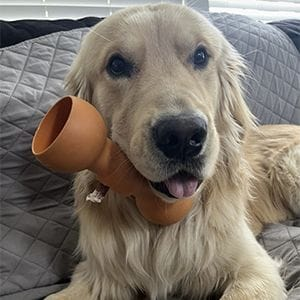


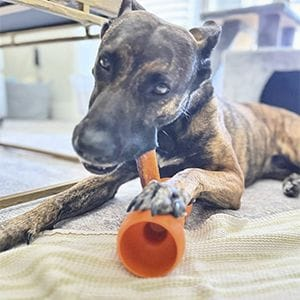

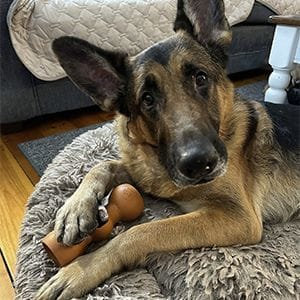

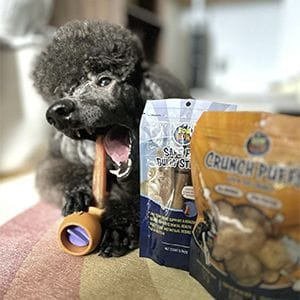
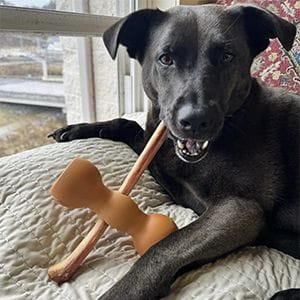



Sign Up to Our Newsletter!
Appeared In















